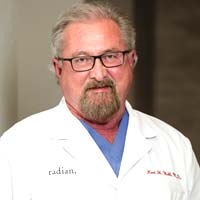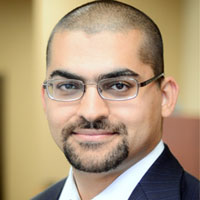Samson Hair Restoration Advances in Platelet Rich Plasma (PRP)-Based Hair Transplant
Hair transplant procedures have gained wide popularity over the past few years, thanks to the advancements in the technology, which have made the procedure more effective and affordable not just to celebrities, but to common men.
Recent advancements in hair transplant include the use of platelet rich plasma (PRP). Platelets contain growth factors that play a significant role in healing wounds. According to
BernsteinMedical.com, PRP can actually stimulate the stem cells (dermal papilla) of the newly transplanted hair follicles. Some practitioners also claim that PRP can be used to stimulate the growth of follicles, thereby reversing hair miniaturization seen in androgenic alopecia and even preventing hair loss.
In addition some studies also indicate PRP can reduce or eliminate the shock loss that some patients experience following a hair transplant procedure.
Platelet rich plasma hair transplant procedures involve drawing blood from the patient, separating and concentrating the platelets through the use of a centrifuge, and then reintroducing the platelets to the patient in both the donor and recipient areas. Recently Samson Hair Restoration announced it is conducting a study of the use of platelet rich plasma (PRP) in hair transplant procedures. The study will be conducted in Samson's Los Angeles and San Diego offices in conjunction with Cytomedix, of Gaithersburg, MD, a leader in the field of regenerative medicine. The study will investigate the specific benefits for hair transplant patients.
Cytomedix will help the study by supplying equipment and supplies while Samson will perform the procedures and follow the patients for several months afterwards to record the results. The study will be conducted by Samson's Senior Surgeon, Dr. Carl Powell.
"PRP has been used for a number of years in cosmetic surgery to reduce swelling, redness and speed healing. We're hoping to see those benefits and others," explained Dr. Powell. "With hair transplant procedures, the hair typically begins to grow around three months after the procedure. Hopefully, PRP will reduce that interval and get the hair growing much sooner, perhaps even right away," Powell added.
Recently Biostem US Corporation, a regenerative medicine company,
announced the results of a two-year study on stem cell hair loss treatment for Alopecia Areata. The study involved 700 patients, with results showing renewed hair growth in 80 percent of the participants.
The stem cell treatment, developed by Biostem, is known as "The Biostem Method." Biostem Method uses the patients' own blood which is processed to become Platelet Rich Plasma (PRP). In addition to using patients' blood, the treatment involves utilization of growth factors, laser treatments for bio-photo stimulation, and a nutraceutical designed to stimulate hair follicle growth.
HairFear
Frequently asked questions about hair transplant procedures
How much does a hair transplant cost?
Hair transplants can vary in price based off of the area in the world that you are interested in getting a hair transplant as well as the size of the area where you may need a hair transplant. Experienced doctors in the United States will often charge some of the highest prices for a hair transplant worldwide and this is why so many travelers make the move to other parts the world like Turkey, India, Thailand, Mexico...etc for their hair transplants.
Will a hair transplant hurt?
Although hair transplants may look like a particularly
unpleasant or painful experience is actually very little discomfort involved
with the surgery itself. Hair transplants are always done under an anesthetic so there's absolutely zero pain during the treatment itself. Many people actually relate the process as being very similar to going to the dentist for filling or root canal. Mild pain can persist over the course of postop treatment but he generally just resumes for a few days.
Who can deliver the best surgery?
It's usually best to consider working with surgeons who have and IAHRS certification or international alliance of hair restoration surgeons recognition. IAHRS can often deliver recommendations for the best surgeons in each particular area.
Is this scarring noticeable?
Any type of hair transplant will require the use of incisions throughout the scalp. There can also sometimes be a small scar from the donor area towards the back of the scalp. Asking to look at photos of the surgeon's previous work will help you to see roughly how bad the scarring could be. In most cases an experienced professional can limit the look of scarring and noticeable marks from the surgery.
How long does it take for the hair to grow?
In most cases hair growth will start within eight months and you can start to see a full effect from the hair transplant after a full year. The initial signs of growth can usually start between 3 to 4 months after the surgery.
Are the results permanent?
The hair follicles that are transplanted are generally the ones which are genetically resistant against the symptoms of baldness. As long as you receive hair loss treatment later in your life after the symptoms of balding have started to subside, you can have a better chance at permanent results.
While everyone know you've had surgery?
If you want to limit the chance that people may find out about your surgery it's important to give at least three weeks of healing as the surgical area will be affected and red just after surgery. After around a month of healing it can look far less noticeable. You could consider wearing a hat while time passes or opting for some extra time off if possible.
How long should I rest after surgery?
It's recommended to rest for at least a few days after surgery so that your body can recover. Trenton to over exert yourself and limit sexual activity, running in the gym for around 10 days after surgery.
Is it possible to lose more hair as a result of surgery?
There is always a chance of shock loss which happens when the hair is weak and miniaturizing after the surgery. As long as the surgeon is choosing the correct hair follicles and performing the surgery well it's possible to minimize the chance of this happening however.
Will I need another hair transplant?
The need for another transplant really depends on the individual. With a solid foundation surgery and working to potentially bolster results with drug therapy, you can improve the stability of the hair that was transplanted as well as prevent further loss. Getting a hair transplant early
on in your 20s or early on in life could lead to needing long-term transplants as hair loss can be progressive.







